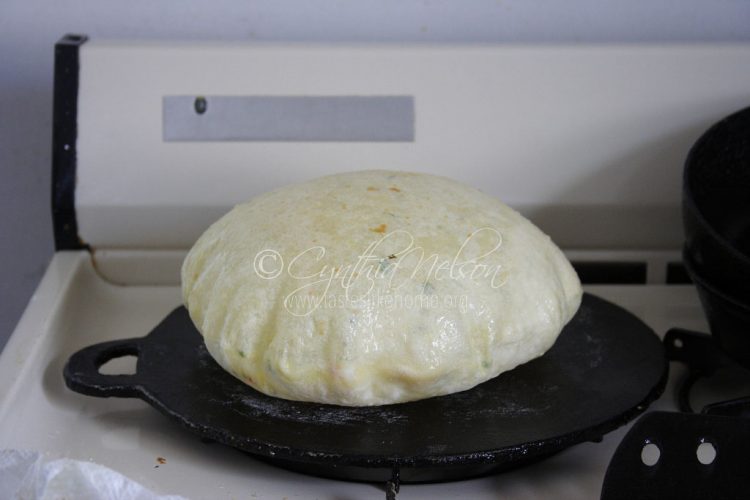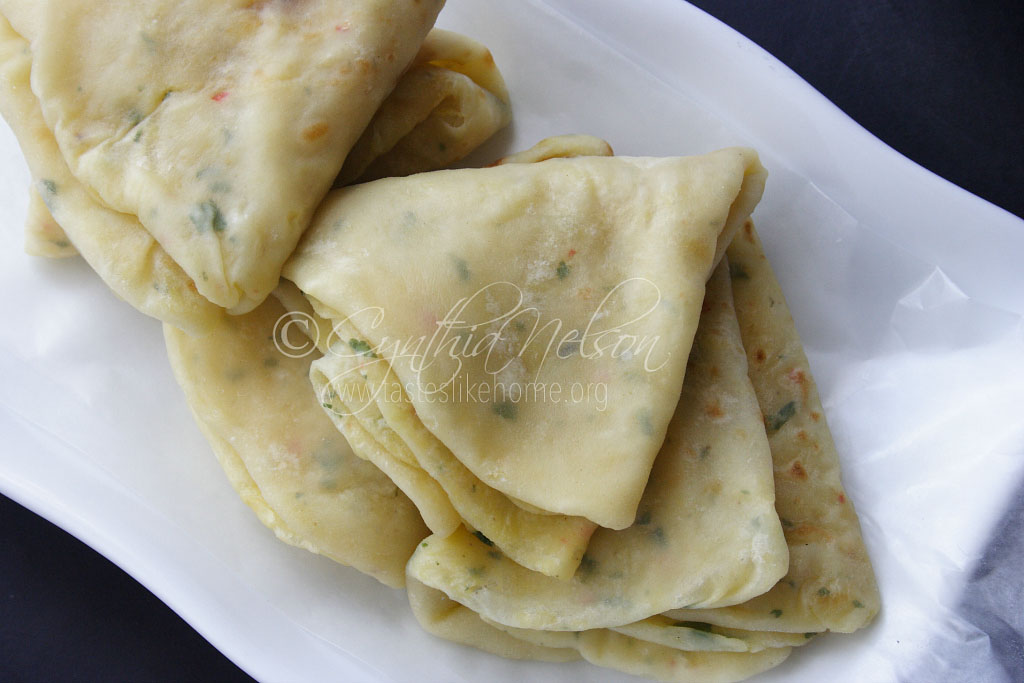 When last you had Aloo (potato) roti?
When last you had Aloo (potato) roti?
Earlier in the week I did not feel like eating any of the things I had cooked – not the roast chicken, eddo-leaf callaloo with coconut milk, fried ochroes, roast sweet potatoes, roast breadfruit or beef soup (hmmm, this means I have food for next week). Most of the time, I ate fruits and biscuits. However, by Thursday, I was ravenous for some type of hot food, and while I thought of things that I could make, nothing excited me until I saw the English potatoes in the basket and immediately thought – Aloo roti!
Rare is the occasion that I make Aloo roti, but when I do, it is always a craving, and every time, it hits the spot. Not only does it satisfy my physiological need, but it feeds my soul and comforts. When I think of Aloo roti, it is about home, big cups of sweet, milky tea, morning sunshine and quiet time. Think about it, a soft, warm Aloo roti, folded on to itself, take a bite, and taste how the potatoes and the roti have become one; you can’t separate one from the other. Take another bite, and another… Don’t worry, you can have another roti. One of the things I like most about Aloo roti, is that you do not need anything to accompany it; it is savoury, delicious and satisfying on its own. If you want, daub a little sour or achar for some heat and a little kick. So very good!

I don’t know, but there is something very appealing about the combination of potatoes and flour dough. Apart from Aloo roti, seasoned mashed potatoes stuffed into and cooked as pot bake is a hearty meal. What about fried potatoes eaten with our paratha roti? The two pair exceptionally. Potato (aloo) and roti are an unapologetic carb-on-carb combination that is hard to beat.
I bet you are there thinking that you could really do with a couple of Aloo roti. Go on. Make some. Start by making the potato filling first. There are a few tips I want to share with you about prepping the filling and stuffing the dough.
For the dough, use the same one that you make for paratha roti. My paratha roti dough is – for every cup of flour, add ¼ teaspoon baking powder, a little salt, sprinkling of sugar and oil, along with room temperature water. Knead to make a soft dough; do not knead for more than 3 minutes once the dough comes together. Rub the dough with oil, cover and let rest for at least 30 minutes before using.
To make the filling:
● Peel and cut the potatoes, add to a pot with water just to cover the potatoes and bring the pot to a boil. When the pot comes to a boil, season with salt to taste. This is the best time to season the potatoes. Cook until tender but not mushy. Drain well and mash while hot.
● To the mashed potatoes, add a little pepper sauce, and a little ground jeera (cumin). I also add some finely minced fresh coriander/cilantro (chadon beni can work too). Some people add onions as well. The seasoning mix is really yours to flavour as you like but just ensure that everything is very finely minced and not chunky. If chunky, it can tear the dough while rolling the roti to cook.
Spread the seasoned potato mixture on to a large plate or platter to cool completely. It is important that the filling is completely cool and dry before stuffing.
To assemble:
Divide the dough equally, form into a flat disk and top with some of the potato mixture. You are really stuffing in the way you would when making Dhal Puri. Pull the dough over the filling and pinch it to secure the filling. Place each filled piece of dough on to a lightly oiled sheet pan, seam side down; rub a little oil on top of the dough to prevent it from drying and forming a skin. Repeat until the dough and filling are used up. Cover and let rest for at least for 30 minutes.
Resting, Rolling and Cooking:
I find that the longer I let the filled dough rest after it has been filled/stuffed, the easier it is to work with – rolls easily without tearing and balloons nicely on the tawah while cooking.
Cut several pieces of greaseproof/wax paper to put in between each cooked roti so that they do not stick to each other.
Heat the tawah over medium heat. Sprinkle a little water to test it, if the water takes between 3 – 5 seconds to burn off, it is ready; lower the heat just a little.
Lightly dust the work surface and rolling pin with flour each time you roll the dough.
Dust the stuffed dough with flour and press it into a flat disk before rolling. As you press, ensure that the filling is reaching the edges of the disk.
Roll with the dough seam-side down, turning the dough or flip it over if you like and roll it thin and to the size that fits your tawah.
Let the roti cook until it starts to have little pockets of bubbles, flip and brush with oil, at this stage you should start to see the roti swell; let it cook and swell completely for several seconds, then flip and brush the other side with oil. Flip it again if you like and then remove it from the tawah.
Repeat the entire process by lightly flouring the work surface, rolling pin, dough and cooking.
Now take two Aloo roti, get yourself a hot or cold drink and enjoy.
Cynthia
cynthia@tasteslikehome.org









